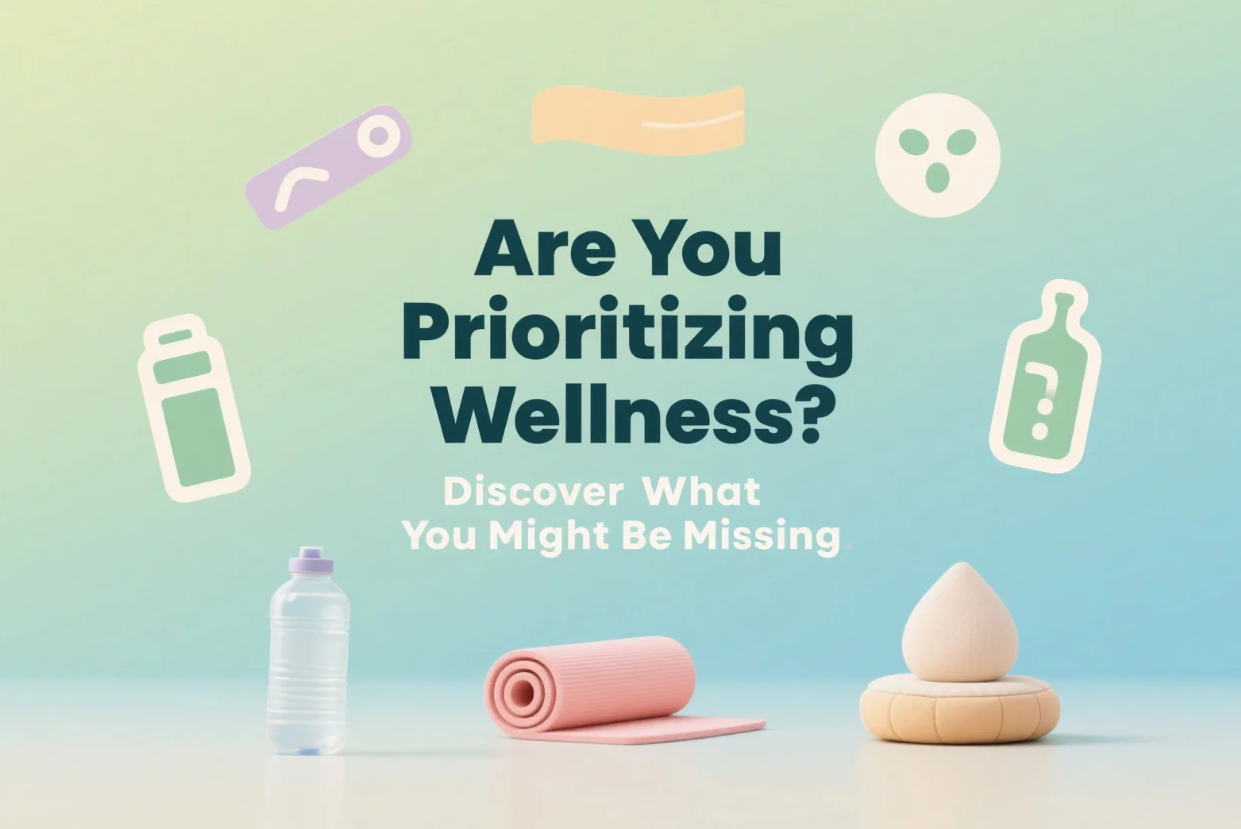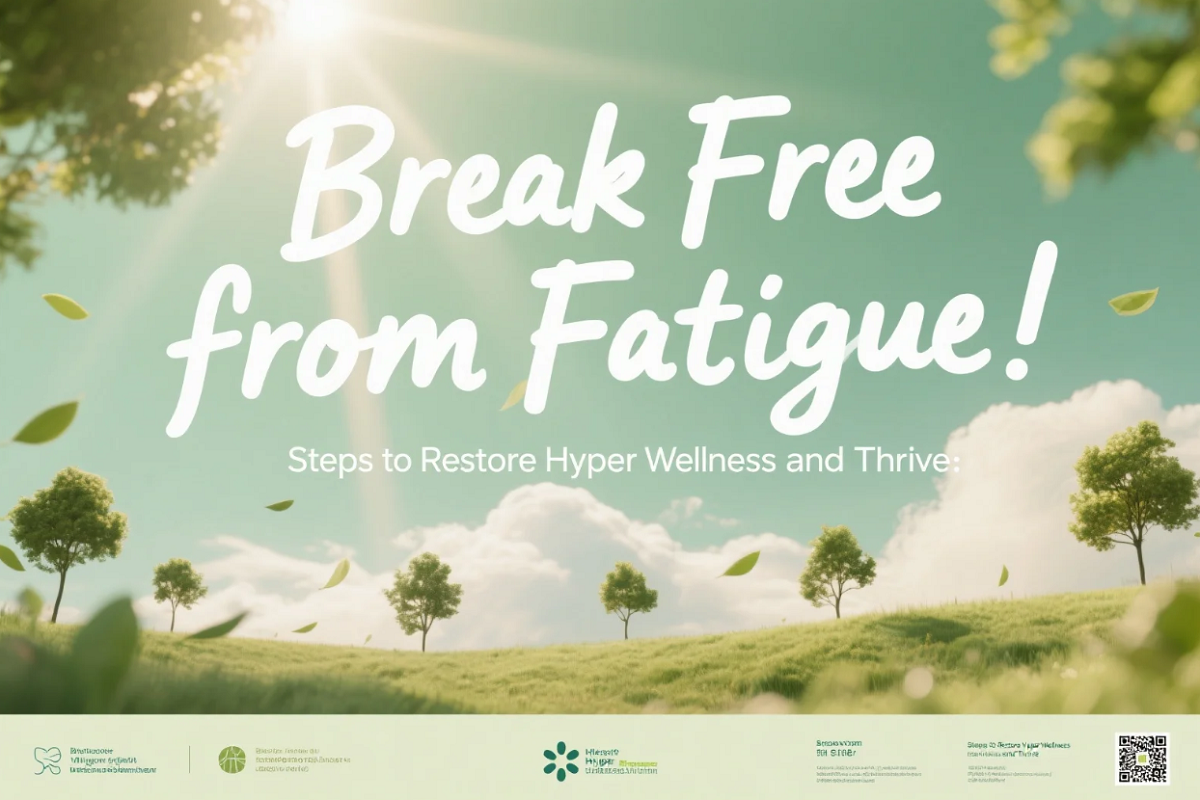Are You Prioritizing Wellness? Discover What You Might Be Missing
-
11
- 14 Nov, 2025

In today’s fast-paced, hyper-connected world, prioritizing wellness often falls to the bottom of our to-do lists. We juggle work, relationships, and responsibilities—telling ourselves we’ll focus on our health later. But what if neglecting wellness is the reason we're constantly drained, unmotivated, or stuck?
This article explores what wellness really means, uncovers common wellness mistakes, and offers actionable strategies to help you elevate your health and well-being. Whether you're a wellness newbie or a health enthusiast, you’ll walk away with valuable insights to help you live a more vibrant life.
What Is Wellness, Really?
Many people equate wellness with being physically fit or eating healthy, but true wellness is far more comprehensive. It’s a dynamic, multidimensional process that includes physical, emotional, mental, and even spiritual health.
The 6 Dimensions of Wellness
- Physical Wellness: Combines active living, quality rest, mindful eating, and proactive health care to fuel your well-being.
- Mental Wellness: Focuses on self-awareness, emotional resilience, and mental clarity.
- Social Wellness: Builds and maintains strong, meaningful relationships.
- Spiritual Wellness: Involves purpose, values, and a sense of connection.
- Environmental Wellness: Encourages a safe, sustainable, and healthy environment.
- Occupational Wellness: Promotes fulfillment and equilibrium in your career.
Understanding these interconnected areas is key to achieving holistic health—and avoiding burnout, anxiety, and chronic fatigue.
Are You Making These Common Wellness Mistakes?
Even with the best intentions, we often fall into habits that work against our wellness goals. Awareness is the gateway—only by seeing our blind spots can we begin to steer clear of them.
1. Ignoring Mental Health
Many people work out daily or eat clean but overlook their emotional well-being. Chronic stress, unresolved trauma, and burnout can all derail your mental wellness. Emotional resilience doesn’t just happen—it’s forged through tools like therapy, mindfulness, and the quiet power of journaling.
2. Skipping Sleep in the Name of Productivity
Sleep isn’t a luxury—it’s a necessity. Less than 7 hours of sleep a night can impair your memory, weaken your immune system, and even increase the risk of disease. Sleep is more than a pause—it's the vital process where your body heals, restores energy, and prepares to conquer the day.
3. Isolating Yourself
You could have the perfect diet and exercise plan, but loneliness has been linked to poor mental and physical health outcomes. Social connections are not optional—they’re essential.
4. Misunderstanding “Healthy” Eating
Yes, whole foods are better than processed ones. But eating too much of anything—like healthy fats or protein—can be counterproductive. Wellness is about balance, not restriction.
5. Confusing Busyness with Productivity
Running from one task to the next doesn’t mean you’re living well. Without mindful living, we risk becoming machines instead of conscious beings.
Why Prioritizing Wellness Should Be Non-Negotiable
When you give wellness the attention it deserves, the benefits ripple through every aspect of your life:
- Increased energy and focus
- Better emotional control and stress management
- Improved immune function
- Greater satisfaction in personal and professional life
- Enhanced longevity and disease prevention
Simply put, prioritizing health makes you more capable in every area—from your relationships to your career.
How to Start Prioritizing Wellness Today
You don’t need a radical overhaul to make progress. Just a few consistent, mindful changes can make a huge impact.
1. Create a Sleep Ritual
Create your own cadence—rest and rise at the times your body needs to feel its best. Avoid screens before bed, keep your bedroom cool and dark, and wind down with a relaxing routine.
2. Move Your Body Every Day
You don’t need an intense workout. A 30-minute walk, a short yoga flow, or a dance break in your living room all count. Each tiny movement stirs your body and clears the fog from your mind.
3. Fuel Your Body Intentionally
Eat whole, nutrient-dense foods most of the time. Stay hydrated and don’t skip meals. Balanced meals support energy, mood, and metabolism.
4. Practice Mindfulness
Mindfulness isn’t just meditation—it can be walking, breathing, or doing a task slowly and with intention. Mindfulness reduces anxiety and improves mental clarity.
5. Strengthen Your Relationships
Call a friend, make time for your partner, or join a community group. Social wellness has a direct impact on happiness and longevity.
6. Reevaluate Your Environment
Is your workspace cluttered? Is your environment a sanctuary of calm, or does it stir a sense of chaos within you? Even small changes like adding plants or natural light can enhance environmental wellness.
7. Set Boundaries at Work
Burnout is real. Define work hours, take breaks, and make time for rest. Protecting your occupational wellness ensures you're productive and happy.
Wellness Is a Lifestyle, Not a Trend
Wellness isn’t about perfection. It’s about progress. By tuning into your body, emotions, and environment, you’ll naturally begin to make better choices. Remember: small, sustainable changes beat big, short-lived efforts every time.
Take this as your sign to check in with yourself: Are you truly prioritizing wellness, or just surviving the day-to-day?
Make wellness a non-negotiable part of your life—and you’ll discover the energy, peace, and joy that’s been missing.









